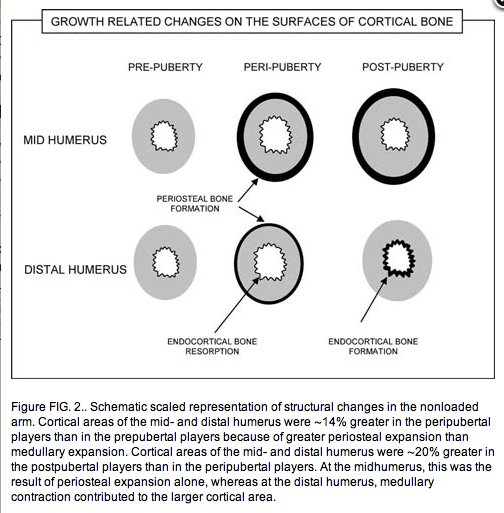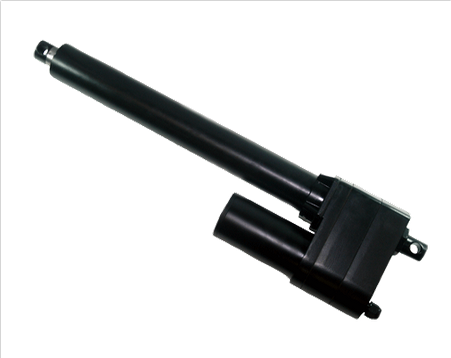Me: I had stated before in a previous Mind Hack post that we can use creatine to improve intelligence by upwards of even 15 IQ points. Now from my research on IGF-2 I have found a few articles an studies down in 2011 that showed that mice which had IGF-2 injected into their hippocampus had increased levels of memory.
Further Analysis: It is really amazing since IGF-2 is one of the few molecules that can actually cross the blood brain barrier. It is suggested that a clinical way of getting humans to take it is through intra-nosal approach. To get the IGF-2 to actually work, it must “coincides with a stage in the learning process called “memory consolidation.” That’s a poorly understood transition period when a memory is still malleable but becoming more established and robust.” It is
From Live Science, Nature, ISSNAF, Science Illustrated, Science Mag, Life-Enhancement…
The article post below is from the LIfe-Enhancement link…
Better for your neurons in 3 ways …Galantamine protects, stimulates,and improves memory… through elevation of insulin-like growth factor 2 By Will Block
Intelligence is the wife, imagination is the mistress, memory is the servant.— Victor Hugo, Post-scriptum de ma vie (1901)
Insulin-like growth factor 2 (IGF2) significantly enhances memory retention and prevents forgetting. That’s what researchers reporting in Nature found last year.1IGF2 is known to be important in body growth and development, but its role in the adult brain has not been established. While highly expressed in the hippocampus, Alberini and colleagues (the authors of the Nature paper) showed that in this region IGF2 has a crucial role in memory consolidation and can make memories last longer.
Using what is known as inhibitory avoidance learning training—a hippocampus-dependent learning task that measures fear memory—the researchers placed rats in an environment where upon entering dark areas the rats received a shock to the feet. Their fear memory was enhanced as they learned to avoid the dark areas (into which they are naturally inclined to enter), and this in turn led to an increase in the hippocampal expression of IGF2.
The creation of this IGF2 requires the transcription factor CCAAT enhancer binding protein β,* which is also essential for memory consolidation. Furthermore, injections of recombinant IGF2 into the hippocampus, after either training or memory retrieval, significantly enhanced memory retention and prevented forgetting.
* CCAAT-enhancer-binding proteins are a family of transcription factors, composed of six members that promote the expression of certain genes through interaction with their promoter. Once bound to DNA, these transcription facts can recruit so-called co-activators that, in turn, can open up chromatin structure or recruit basal transcription factors. They are involved in different cellular responses, such as in the control of cellular proliferation, growth, and differentiation, metabolism, immunity, and memory enhancement.
The time factor for efficacy
To be effective, IGF2 needs to be administered within a sensitive period for memory consolidation. IGF2-dependent memory enhancement requires IGF2 receptors, new protein synthesis, the function of activity-regulated cytoskeletal-associated protein, andglycogen-synthase kinase 3 (GSK3). This is intriguing because GSK3 is a regulatory kinase that is implicated in a number of diseases, including type 2 diabetes, Alzheimer’s disease, inflammation, cancer, and bipolar disorder. In hippocampal slices, IGF2 promotes IGF2 receptor-dependent, persistent long-term potentiation after weak synaptic stimulation. Thus, IGF2 may represent a novel target for cognitive enhancement therapies.
Galantamine significantly increases IGF2
In a new study conducted in Japan, researchers examined the effects of acutegalantamine treatment on the mRNA levels of neurotrophic growth factors in the mouse hippocampus and prefrontal cortex.2
The systemic administration of galantamine at doses of 0.3–3 mg/kg (for 3/mg/kg, the human equivalent is 21 mg for a 187 lb person) caused a significant increase in IGF2 mRNA levels in the hippocampus, but not in the prefrontal cortex. The effect of galantamine was also observed at the protein level. IGF2 promotes cell growth, survival, migration, and differentiation and plays an important role in normal fetal development.
IGF2 significantly enhances memory retention and prevents forgetting.
IGF2 increases memory consolidation in rats
In the study cited above,1 it was shown that inhibitory avoidance learning led to an increase in hippocampal expression of IGF2, closely linking to memory consolidation in rats. The researchers showed that injection of recombinant IGF2 into the hippocampus after either training or memory retrieval enhanced memory retention and prevented forgetting. They also showed that IGF2 promoted IGF2 receptor-dependent persistent long-term potentiation after weak synaptic stimulation in the rat hippocampal slices.
Three-way neuronal help
Thus, IGF2 has been implicated in cognitive function associated with the hippocampus. In addition, another study recently demonstrated that IGF2 is an important regulator of adult hippocampal neurogenesis.3 As the authors of the Japanese galantamine/IGF2 study2 observed in a separate experiment, acute galantamine treatment (3 mg/kg) increased newly divided cell proliferation in the hippocampal dentate gyrus of mice 24 hours after the injection (unpublished).
IGF2 has a crucial role in memory consolidation and can make memories last longer.
When taken together, the present finding implies that galantamine: 1) protects neurons, 2) stimulates neurogenesis, and 3) improves cognitive dysfunction in Alzheimer’s disease via its action on IGF2 expression.
The researchers also observed that the higher dose of galantamine (3 mg/kg) caused a transient increase in fibroblast growth factor 2 (FGF2) mRNA level and a decrease inbrain-derived neurotrophic factor (BDNF) mRNA level in the hippocampus of mice. The exact reason for these effects is not known, but previous studies show that nicotine ornicotine acetylcholine receptor (nAChR) agonists increase the expression of FGF2 and decrease the expression of BDNF in the hippocampus.
What is suggested, however, is that the galantamine-induced changes in FGF2 and BDNF mRNA levels may be due to its action on nAChR, although galantamine even at low doses binds allosterically to nAChR and potentiates its function which is to make acetylcholine perform better.With regard to the effect of galantamine on BDNF levels, the Japanese researchers reported that galantamine increases phosphorylation of BDNF’s trkB receptor and transcription factor CREB† in the mouse hippocampus. Thus, it is thought unlikely that galantamine-induced reduction in the BDNF mRNA levels per se is involved in the facilitation of hippocampal neurotrophin signaling.
† CREB (cAMP response element-binding protein) is a cellular transcription factor. It binds to certain DNA sequences called cAMP response elements (CRE), thereby increasing or decreasing the transcription of the downstream genes. cAMP (cyclic adenosine monophosphate) is a second messenger important in many biological processes.
Other signals that are not involved
Among the neurotrophic/growth factors examined in the study, galantamine did not affect NGF, VEGF, or IGF1 mRNA levels in the hippocampus and prefrontal cortex. Thus, these factors may not act as the downstream signals of galantamine in either brain region.
Galantamine 1) protects neurons, 2) stimulates neurogenesis, and 3) improves cognitive dysfunction in Alzheimer’s disease via its action on IGF2 expression.
Previous in vitro studies have shown that galantamine is an allosterically potentiating ligand of nAChR. In fact, the nAChR-modulating properties play a key role in the effects of galantamine, while muscarinic acetylcholine receptor (mAChR) activation contributes at least partly to the antipsychotic effect and improvement of cognitive dysfunction by galantamine in rodents.
Antagonists and agonists
The present study2 found that both a nonselective nAChR antagonist and a selective α7 nAChR antagonist block the galantamine-induced increase in hippocampal IGF2 mRNA levels. But, it is not blocked by a preferential M1 mAChR antagonist.
These findings suggest that α7 nAChR is involved in the increasing effect of galantamine on IGF2 expression.
Moreover, the injection of a selective α7 nAChR agonist, at doses of 0.3 and 1 mg/kg increased IGF2 mRNA levels in the hippocampus. These findings suggest that α7 nAChR is involved in the increasing effect of galantamine on IGF2 expression.
In contrast to galantamine, donepezil did not affect IGF2 mRNA levels in the hippocampus.
Getting the dose right
Concerning the effect of the selective α7 nAChR agonist, others have reported that its injection at doses of 1 mg/kg, but not 0.3 mg/kg, improved the performance of rats in the novel object recognition test and much higher doses (0.3 and 1 mg/kg, intravenously) reversed amphetamine-induced auditory gating deficits in rats. The apparent difference in the effect of this agonist at 0.3 mg/kg between the behavioral and biochemical studies may be due to the difference in pharmacokinetics of the drug between rats and mice. Rats have twice the surface area of mice, and this difference determines the right dose.
Donepezil, another inhibitor of acetylcholinesterase, fails
In another study,4 the effect of donepezil was also examined to study the role of galantamine as an allosterically potentiating ligand of nAChR. Donepezil, an inhibitor of acetylcholinesterase, increases extracellular levels of acetylcholine (ACh), which interacts with the α7 nAChR as well, but is not an allosterically potentiating ligand of nAChR.
Galantamine increases hippocampal IGF2 mRNA levels in a dose-dependent manner.
In contrast to galantamine, donepezil did not affect IGF2 mRNA levels in the hippocampus. This difference may be explained by the evidence that ACh has a lower affinity for the α7 nAChR compared to the α7 nAChR agonist references above, and that galantamine is an allosterically potentiating ligand of nAChR.
The present finding suggests that the effect of galantamine on hippocampal IGF2 levels may contribute to the mechanism for its neuroprotective and neurogenesis effects.
Recalling the music of memory
In conclusion, the Japanese researchers found that acute administration of galantamine increases hippocampal IGF2 mRNA levels in a dose-dependent manner. Their study suggests that the galantamine-induced increase in the hippocampal IGF2 mRNA and protein levels is mediated by the α7 nAChR. Recall that IGF2 has been implicated in cell growth and survival, and hippocampus-associated function. Consequently, the present finding suggests that the effect of galantamine on hippocampal IGF2 levels may contribute to the mechanism for its neurorotection or neurogenesis. This may be why people taking galantamine like they way that they feel, and that one musician who was forgetting certain music chords that he had known by heart for years, brought back those chords, instrumental to his music, with galantamine.
References
- Chen DY, Stern SA, Garcia-Osta A, Saunier-Rebori B, Pollonini G, Bambah-Mukku D, Blitzer RD, Alberini CM. A critical role for IGF-II in memory consolidation and enhancement. Nature 2011 Jan 27;469(7331):491-7.
- Kita Y, Ago Y, Takano E, Fukada A, Takuma K, Matsuda T. Galantamine increases hippocampal insulin-like growth factor 2 expression via α7 nicotinic acetylcholine receptors in mice. Psychopharmacology (Berl). 2012 Aug 30. [Epub ahead of print]
- Bracko O, Singer T, Aigner S, Knobloch M, Winner B, Ray J, Clemenson GD Jr, Suh H, Couillard-Despres S, Aigner L, Gage FH, Jessberger S. Gene expression profiling of neural stem cells and their neuronal progeny reveals IGF2 as a regulator of adult hippocampal neurogenesis. J Neurosci 2012 Mar 7;32(10):3376-87.
- Koda K, Ago Y, Kawasaki T, Hashimoto H, Baba A, Matsuda T. Galantamine and donepezil differently affect isolation rearing-induced deficits of prepulse inhibition in mice. Psychopharmacology (Berl) 2008;196:293–301.
Will Block is the publisher and editorial director of Life Enhancement magazine.
The interview below is taken from the ISSNAF link.
| CRISTINA ALBERINI AWARDED THE DEAN’S AWARD FOR EXCELLENCE IN BASIC SCIENCE RESEARCH |
| May 2011 – Cristina Alberini, Professor in Neuroscience, Psychiatry and Structural and Chemical Biology at Mount Sinai School of Medicine in New York was awarded the Dean’s Award for Excellence in Basic Science Research. Earlier this year, the discovery of the IGF-II protein in the hippocampus earned her the cover on “Nature”. For Dr Alberini’s interviewCristina Alberini Awarded the Dean’s Award for Excellence in Basic Science Research
Cristina Alberini is a graduate in Biological Sciences at the University of Pavia and received her doctorate in Immunology at the University of Genoa. After holding positions at the Dana Farber Cancer Institute, Harvard Medical School in Boston, Columbia University in New York, the University of Brescia, and Brown University in Providence, Alberini has been Faculty at Mount Sinai School of Medicine since 2001, where she currently is Professor in Neuroscience, Psychiatry and Structural and Chemical Biology. Among many other acknowledgments, Alberini received the Golgi prize in 2009. This year, she received a 300,000$ grant from the McKnight Endowment Fund for Neuroscience for a three year study on the Role of Astrocytes in Memory and Cognitive Disorders and the discovery of the IGF-II protein in the hippocampus earned her the cover on “Nature”.
Dr Alberini, what is the focus of your research?
I have now focused my interest on how the brain changes in response to external and internal stimuli. In particular, I am intrigued by how memories are formed, stored and elaborated. Memory is a fundamental biological function and a critical component of our identity. As such, it involves our brain, mind and psyche. I am interested in exploring the biological mechanisms underlying memory formation. I am also interested in applying this knowledge to understand how memory becomes an integral part of pathologies such as addiction and trauma and how we can combat memory decay and memory loss.
Is IGF2 a growth promoting hormone during gestation? How did you realize that this hormone could be related with memory?
IGF2 is a growth factor that promotes growth during gestation; targeted deletion of IGF2 inhibits growth whereas over-expression of IGF2 promotes growth.
We have been studying the biological changes after learning and required for long-term memory formation in a brain region called the hippocampus. This region is important for the formation of long-term memory. We found that IGF2 levels are regulated by learning in the hippocampus. IGF-II is regulated as a target protein of a pathway that we know to be essential for memory formation. This pathway is the cAMP-response element binding protein – CCAAT enhancer binding protein (CREB-C/EBP), which are proteins that are necessary for the production of other new proteins, like IGF2. Therefore, we identified a new function for IGF-II in the adult brain.
How did you inject IGF-II in the hippocampus? Are you going to try others methods in clinical tests?
We use a rat model in our lab. To deliver IGF2 into the hippocampus, we implant bilateral cannulae, which allow us to directly inject IGF2 acutely into a targeted brain region.
We are planning to try systemic injections as well as intra-nasal administrations of IGF2. As IGF-2 is one of the factors that readily cross the blood brain barrier, systemic (e.g.subcutaneous) administration of IGF2 would deliver IGF2 to the brain. Intranasal administration will also readily bypass the blood brain barrier, which is the structural barrier of that protects our brain from foreign substances in the blood.
Could you explain how memory consolidation works and how IGF-II is important to enhances memory?
Memory consolidation is the process through which newly learned information becomes long-term. If new information we encounter is important it will become a long-term memory. The new memory remains fragile and sensitive to disruption for some time, but over a day or two it becomes stronger and resilient to disruption. This process is the process of consolidation, that is the process that stabilizes a long-term memory. This process depends on the synthesis of new proteins. In our lab we are interested in identifying these newly synthesized proteins that are essential for long-term memory formation. We found IGF2 to be one of these newly synthesized proteins. First we found that the levels of IGF2 increase in the hippocampus after learning, and disrupting the new synthesis of IGF2 impairs the formation of long-term memory. Furthermore, we found that if we give IGF2 after learning, memory is significantly enhanced. The enhancing effect is only seen if we administer IGF-II during the “active” period of memory: right after learning or after memory is retrieved. Retrieval (or recall) in fact reactivates the memory. The active phase after memory retrieval is the reconsolidation phase, during which the memory is again labile for some time and restabilizes over time.
In your opinion, why IGF2 could represent a novel target for cognitive enhancement?
IGF2 is a physiological factor that’s produced is our body, so we don’t predict too serious problems with rejecting exogenously administered IGF2 or toxicity. However, careful studies need to be done to exclude that there are unwanted effects and to prove that the treatment is safe. Since we found that even under an acute administration (single injection of IGF-2) after learning or memory retrieval, memory is robustly and persistently enhanced and forgetting prevented, it represents a simpler and easy to follow clinical regiment (it does not require multiple or chronic treatments) and would presumably also minimize side effects. Lastly, as I mentioned earlier, IGF2 readily crosses the blood brain barrier, so the route of administration won’t hinder its clinical applicability. |







